-
 Bitcoin
Bitcoin $117700
-0.20% -
 Ethereum
Ethereum $3587
1.19% -
 XRP
XRP $3.422
-0.97% -
 Tether USDt
Tether USDt $1.000
-0.02% -
 BNB
BNB $733.3
0.69% -
 Solana
Solana $177.3
0.36% -
 USDC
USDC $0.9998
-0.01% -
 Dogecoin
Dogecoin $0.2446
1.42% -
 TRON
TRON $0.3183
-2.35% -
 Cardano
Cardano $0.8262
1.07% -
 Hyperliquid
Hyperliquid $44.37
-0.24% -
 Stellar
Stellar $0.4597
-0.87% -
 Sui
Sui $3.841
2.27% -
 Chainlink
Chainlink $18.44
3.20% -
 Hedera
Hedera $0.2658
1.54% -
 Bitcoin Cash
Bitcoin Cash $518.2
0.50% -
 Avalanche
Avalanche $24.38
4.08% -
 Shiba Inu
Shiba Inu $0.00001491
1.30% -
 Litecoin
Litecoin $112.7
10.87% -
 UNUS SED LEO
UNUS SED LEO $8.991
0.16% -
 Toncoin
Toncoin $3.183
-0.13% -
 Polkadot
Polkadot $4.377
3.56% -
 Uniswap
Uniswap $10.16
1.35% -
 Monero
Monero $325.1
2.08% -
 Ethena USDe
Ethena USDe $1.001
-0.01% -
 Bitget Token
Bitget Token $4.922
0.29% -
 Pepe
Pepe $0.00001343
3.62% -
 Dai
Dai $0.9999
-0.01% -
 Aave
Aave $319.5
-0.89% -
 Bittensor
Bittensor $416.3
1.23%
How to use DMI in the gap position? Is the DMI signal effective after the gap?
Use DMI to analyze gaps in crypto: +DI above -DI suggests upward trend, ADX above 25 indicates strong trend; combine with RSI and volume for better signals.
May 23, 2025 at 02:15 am

Understanding DMI and Gap Positions
The Directional Movement Index (DMI) is a technical analysis tool used by traders to assess the strength and direction of a price trend. It consists of three lines: the Positive Directional Indicator (+DI), the Negative Directional Indicator (-DI), and the Average Directional Index (ADX). The DMI is particularly useful in identifying whether a market is trending or not, and it can be a valuable tool for traders looking to make informed decisions.
A gap in the cryptocurrency market refers to a situation where the price of an asset moves sharply up or down from the previous closing price, with no trading occurring in between. Gaps can be caused by various factors, including news events, large trades, or shifts in market sentiment. Understanding how to use the DMI in the context of a gap can help traders better navigate these volatile market conditions.
Using DMI in the Gap Position
When a gap occurs, traders often look for signals to determine whether the gap will continue to drive the price in the same direction or if it will eventually fill. The DMI can be a useful tool in this scenario. Here's how to use the DMI in the gap position:
Identify the Gap: First, confirm that a gap has occurred. This can be done by observing the price chart and noting any significant jumps in price from the previous closing price.
Analyze DMI Indicators: After confirming the gap, analyze the +DI and -DI lines of the DMI. If the +DI is above the -DI, it suggests that the bullish momentum is stronger, and the gap might continue to drive the price upwards. Conversely, if the -DI is above the +DI, it indicates stronger bearish momentum, suggesting that the gap might lead to a downward price movement.
Consider the ADX: The ADX line of the DMI provides insight into the strength of the trend. An ADX value above 25 typically indicates a strong trend, which can help traders determine whether the gap is likely to persist. If the ADX is below 25, the trend may be weak, suggesting that the gap might not have a significant impact on the price direction.
Monitor for Crossovers: Pay close attention to any crossovers between the +DI and -DI lines. A bullish crossover (when +DI crosses above -DI) after a gap can reinforce the likelihood of the gap continuing to drive the price higher. A bearish crossover (when -DI crosses above +DI) might suggest that the gap will fill, and the price will move downwards.
Is the DMI Signal Effective After the Gap?
The effectiveness of the DMI signal after a gap can vary depending on several factors, including the strength of the trend and the overall market conditions. Here are some considerations:
Trend Strength: As mentioned earlier, the ADX line of the DMI provides a measure of trend strength. If the ADX is high (above 25) after a gap, it suggests that the trend is strong, and the DMI signal is more likely to be effective. Conversely, a low ADX value (below 25) might indicate a weak trend, reducing the reliability of the DMI signal.
Market Volatility: High volatility in the cryptocurrency market can impact the effectiveness of the DMI signal. In highly volatile conditions, the DMI might generate false signals, leading to potential misinterpretations of the gap's impact on the price.
Confirmation with Other Indicators: To increase the effectiveness of the DMI signal after a gap, traders often use other technical indicators for confirmation. For example, combining the DMI with the Relative Strength Index (RSI) or Moving Averages can provide a more comprehensive view of the market and help validate the DMI signal.
Historical Performance: Analyzing the historical performance of the DMI signal in similar gap scenarios can provide insights into its effectiveness. Traders can review past data to see how often the DMI signal accurately predicted the continuation or filling of gaps.
Practical Example of Using DMI in a Gap Position
To illustrate how to use the DMI in a gap position, let's consider a hypothetical scenario with Bitcoin (BTC):
Gap Occurrence: Suppose Bitcoin closes at $50,000 and opens the next day at $52,000, creating a gap.
DMI Analysis: After confirming the gap, you analyze the DMI indicators. You find that the +DI is above the -DI, and the ADX is at 30, indicating a strong bullish trend.
Signal Interpretation: Based on the DMI analysis, the bullish signal suggests that the gap is likely to continue driving the price of Bitcoin upwards.
Monitoring: You continue to monitor the DMI for any crossovers or changes in the ADX. If the +DI remains above the -DI and the ADX stays above 25, it reinforces the bullish signal.
Trade Execution: With the DMI signal indicating a continuation of the gap, you might decide to enter a long position on Bitcoin, expecting the price to rise further.
Combining DMI with Other Technical Indicators
While the DMI can provide valuable insights into the trend strength and direction after a gap, combining it with other technical indicators can enhance its effectiveness. Here are some common indicators to consider:
Relative Strength Index (RSI): The RSI measures the speed and change of price movements. A high RSI value (above 70) might suggest that the asset is overbought, while a low RSI value (below 30) indicates that it is oversold. Combining the DMI with the RSI can help traders gauge the potential for a gap to continue or fill.
Moving Averages: Moving averages smooth out price data to identify trends over time. Using a combination of short-term and long-term moving averages can help confirm the DMI signal. For example, if the price is above both the short-term and long-term moving averages and the DMI indicates a bullish trend, it reinforces the likelihood of the gap continuing to drive the price higher.
Volume: Volume analysis can provide additional context to the DMI signal. High trading volume after a gap can confirm the strength of the trend indicated by the DMI, while low volume might suggest that the gap is less likely to have a significant impact on the price.
Adjusting DMI Settings for Different Cryptocurrencies
Different cryptocurrencies may exhibit varying levels of volatility and trading activity, which can affect the effectiveness of the DMI signal after a gap. Here are some tips for adjusting DMI settings for different cryptocurrencies:
Timeframe: The timeframe used for the DMI can significantly impact its effectiveness. For highly volatile cryptocurrencies like Bitcoin or Ethereum, using a shorter timeframe (e.g., 15-minute or 1-hour charts) might be more appropriate. For less volatile cryptocurrencies, a longer timeframe (e.g., daily charts) might provide more reliable signals.
DMI Periods: The default settings for the DMI are typically 14 periods for the +DI, -DI, and ADX. However, traders can experiment with different period settings to find what works best for specific cryptocurrencies. For example, reducing the period to 10 might provide more sensitive signals for highly volatile assets, while increasing it to 20 might be better for less volatile assets.
Backtesting: Before applying the DMI to real trading scenarios, backtesting the indicator with different settings on historical data can help traders understand its effectiveness for specific cryptocurrencies. This can involve analyzing past gaps and the subsequent DMI signals to see how well they predicted the price movements.
Frequently Asked Questions
Q1: Can the DMI be used effectively in all types of gaps, such as breakaway, runaway, and exhaustion gaps?
A1: The effectiveness of the DMI in different types of gaps can vary. Breakaway gaps, which occur at the start of a new trend, might be more reliably predicted by the DMI due to the strong trend strength indicated by the ADX. Runaway gaps, which occur during a trend, can also be effectively analyzed with the DMI, as they often coincide with strong trends. Exhaustion gaps, which occur at the end of a trend, might be less reliably predicted by the DMI, as the trend strength could be waning, and the ADX might not provide a clear signal.
Q2: How can traders differentiate between a false gap and a genuine gap using the DMI?
A2: To differentiate between a false gap and a genuine gap, traders can use the DMI in conjunction with other technical indicators. A false gap might be characterized by a low ADX value (below 25), indicating a weak trend, and a quick reversal in the +DI and -DI lines. A genuine gap, on the other hand, is likely to have a high ADX value (above 25) and a consistent trend direction indicated by the +DI and -DI lines. Additionally, high trading volume accompanying the gap can further confirm its genuineness.
Q3: Are there any specific DMI settings that work better for intraday gap trading in cryptocurrencies?
A3: For intraday gap trading in cryptocurrencies, shorter timeframes and DMI periods can be more effective. Using a 5-minute or 15-minute chart with a DMI period of 10 can provide more sensitive signals that are suitable for the rapid price movements often seen in intraday trading. However, traders should backtest these settings on historical data to ensure they are effective for the specific cryptocurrency being traded.
Q4: How can traders use the DMI to manage risk when trading gaps in the cryptocurrency market?
A4: To manage risk when trading gaps using the DMI, traders can set stop-loss orders based on the DMI signals. For example, if the DMI indicates a bullish trend after a gap, a stop-loss order can be placed below a key support level identified using the DMI and other technical indicators. Additionally, traders can use the ADX to assess the strength of the trend and adjust their position sizes accordingly. A high ADX value might warrant a larger position size, while a low ADX value suggests a more conservative approach.
Disclaimer:info@kdj.com
The information provided is not trading advice. kdj.com does not assume any responsibility for any investments made based on the information provided in this article. Cryptocurrencies are highly volatile and it is highly recommended that you invest with caution after thorough research!
If you believe that the content used on this website infringes your copyright, please contact us immediately (info@kdj.com) and we will delete it promptly.
- XRP Mining, the GENIUS Act, and Coin Holders: A New Era?
- 2025-07-20 06:30:12
- Arctic Pablo Coin: Navigating the Icebound Estates Presale and Token Burn Strategy
- 2025-07-20 06:30:12
- Arctic Pablo Coin's Myth-Themed Presale: Icebound Estates and Beyond!
- 2025-07-20 06:50:12
- Snorter Token's Presale Success: Riding the GENIUS Act Wave in the Crypto World
- 2025-07-20 06:50:12
- PENGU Token's Breakout Momentum: Riding the Wave in a Bearish Market
- 2025-07-20 07:10:12
- Crypto's 100x Hunt in 2025: Beyond the Hype
- 2025-07-20 07:10:12
Related knowledge
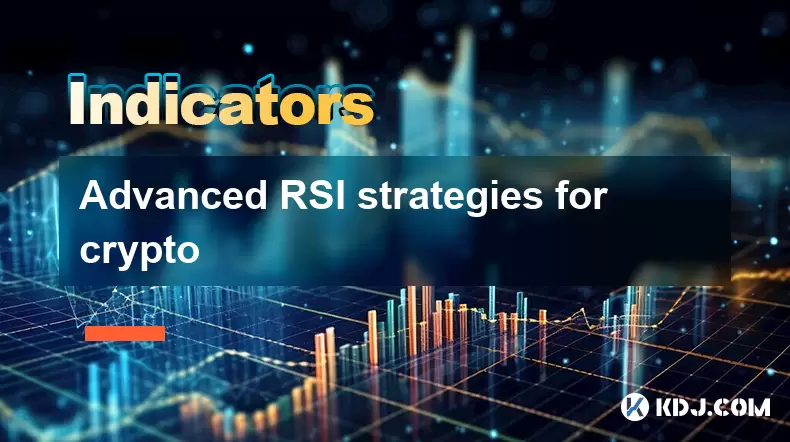
Advanced RSI strategies for crypto
Jul 13,2025 at 11:01am
Understanding the Basics of RSI in Cryptocurrency TradingThe Relative Strength Index (RSI) is a momentum oscillator used to measure the speed and chan...
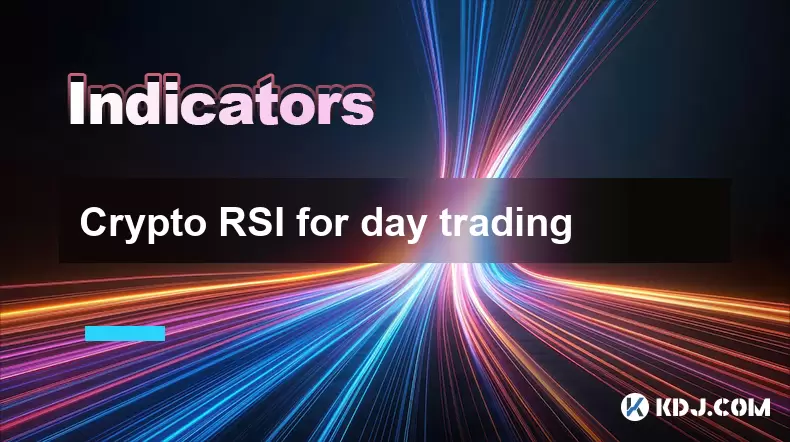
Crypto RSI for day trading
Jul 12,2025 at 11:14am
Understanding RSI in the Context of Cryptocurrency TradingThe Relative Strength Index (RSI) is a momentum oscillator used to measure the speed and cha...
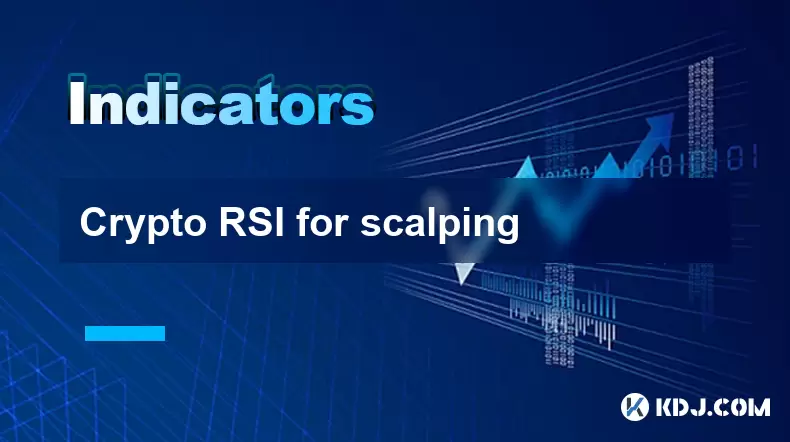
Crypto RSI for scalping
Jul 12,2025 at 11:00pm
Understanding RSI in the Context of Crypto TradingThe Relative Strength Index (RSI) is a momentum oscillator widely used by traders to measure the spe...
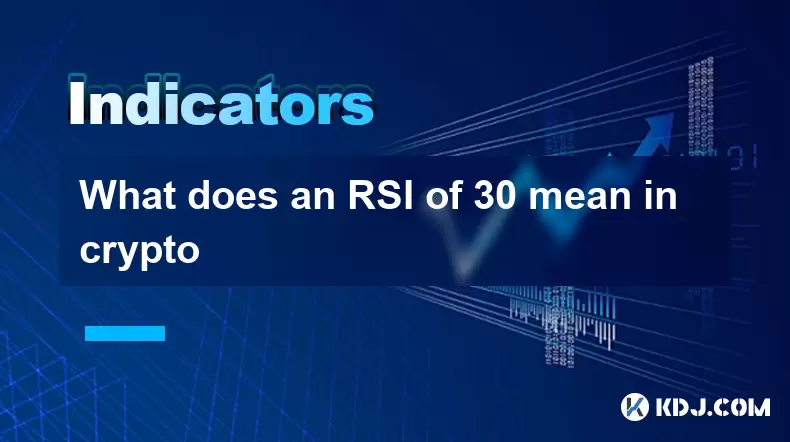
What does an RSI of 30 mean in crypto
Jul 15,2025 at 07:07pm
Understanding RSI in Cryptocurrency TradingRelative Strength Index (RSI) is a momentum oscillator widely used in cryptocurrency trading to measure the...
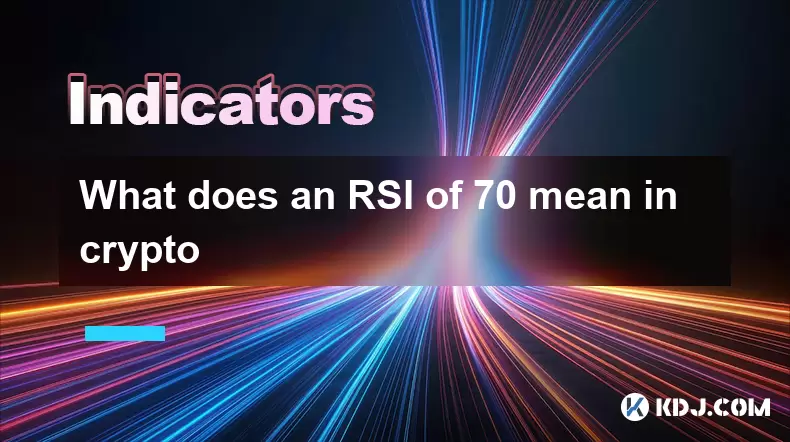
What does an RSI of 70 mean in crypto
Jul 13,2025 at 06:07pm
Understanding the RSI Indicator in Cryptocurrency TradingThe Relative Strength Index (RSI) is a widely used technical analysis tool that helps traders...
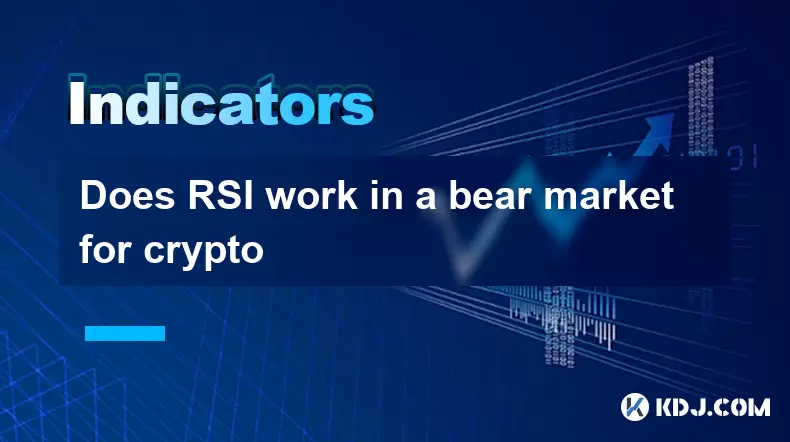
Does RSI work in a bear market for crypto
Jul 16,2025 at 01:36pm
Understanding RSI in Cryptocurrency TradingThe Relative Strength Index (RSI) is a momentum oscillator used by traders to measure the speed and change ...

Advanced RSI strategies for crypto
Jul 13,2025 at 11:01am
Understanding the Basics of RSI in Cryptocurrency TradingThe Relative Strength Index (RSI) is a momentum oscillator used to measure the speed and chan...

Crypto RSI for day trading
Jul 12,2025 at 11:14am
Understanding RSI in the Context of Cryptocurrency TradingThe Relative Strength Index (RSI) is a momentum oscillator used to measure the speed and cha...

Crypto RSI for scalping
Jul 12,2025 at 11:00pm
Understanding RSI in the Context of Crypto TradingThe Relative Strength Index (RSI) is a momentum oscillator widely used by traders to measure the spe...

What does an RSI of 30 mean in crypto
Jul 15,2025 at 07:07pm
Understanding RSI in Cryptocurrency TradingRelative Strength Index (RSI) is a momentum oscillator widely used in cryptocurrency trading to measure the...

What does an RSI of 70 mean in crypto
Jul 13,2025 at 06:07pm
Understanding the RSI Indicator in Cryptocurrency TradingThe Relative Strength Index (RSI) is a widely used technical analysis tool that helps traders...

Does RSI work in a bear market for crypto
Jul 16,2025 at 01:36pm
Understanding RSI in Cryptocurrency TradingThe Relative Strength Index (RSI) is a momentum oscillator used by traders to measure the speed and change ...
See all articles

























































































